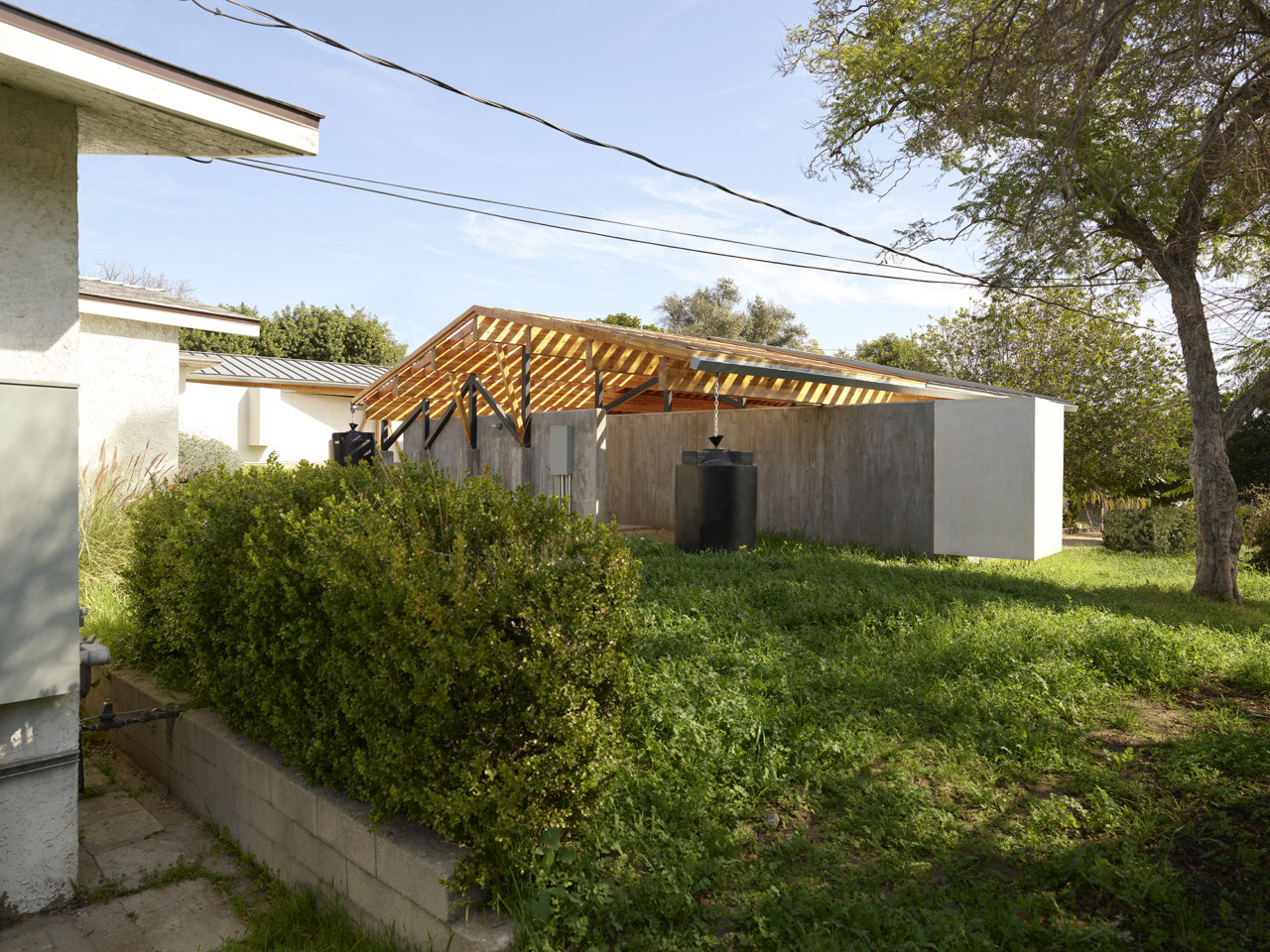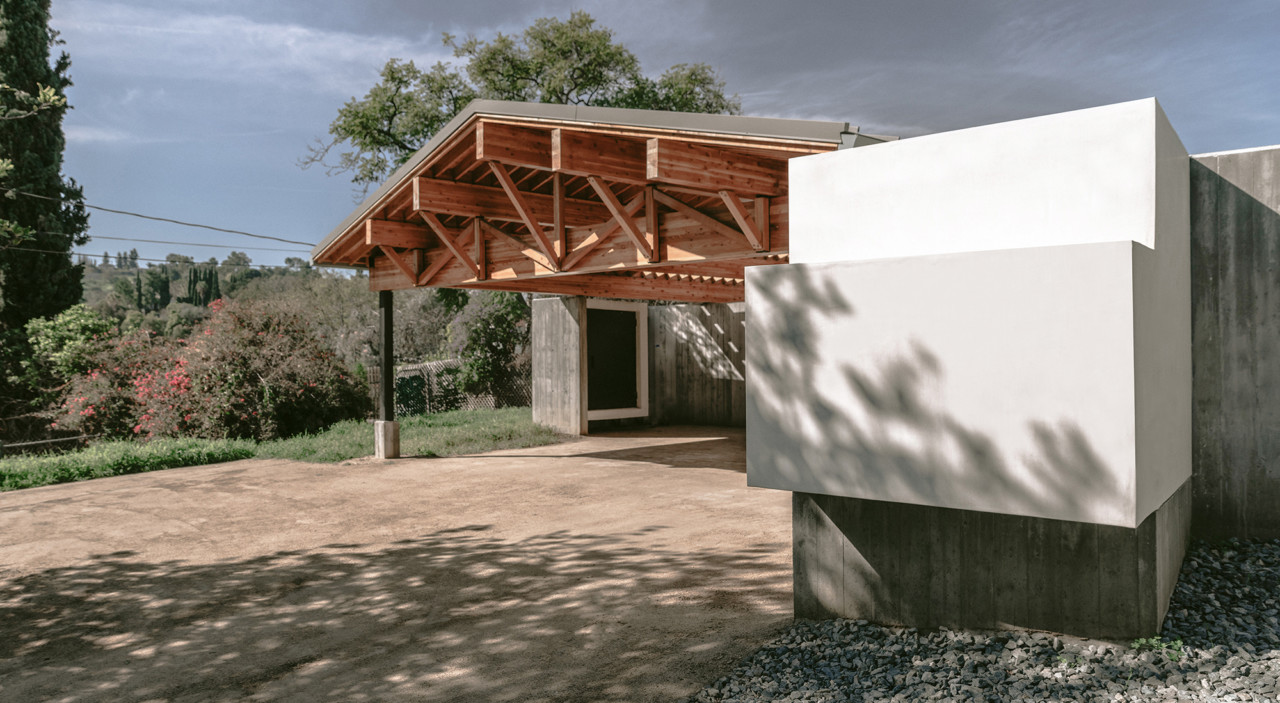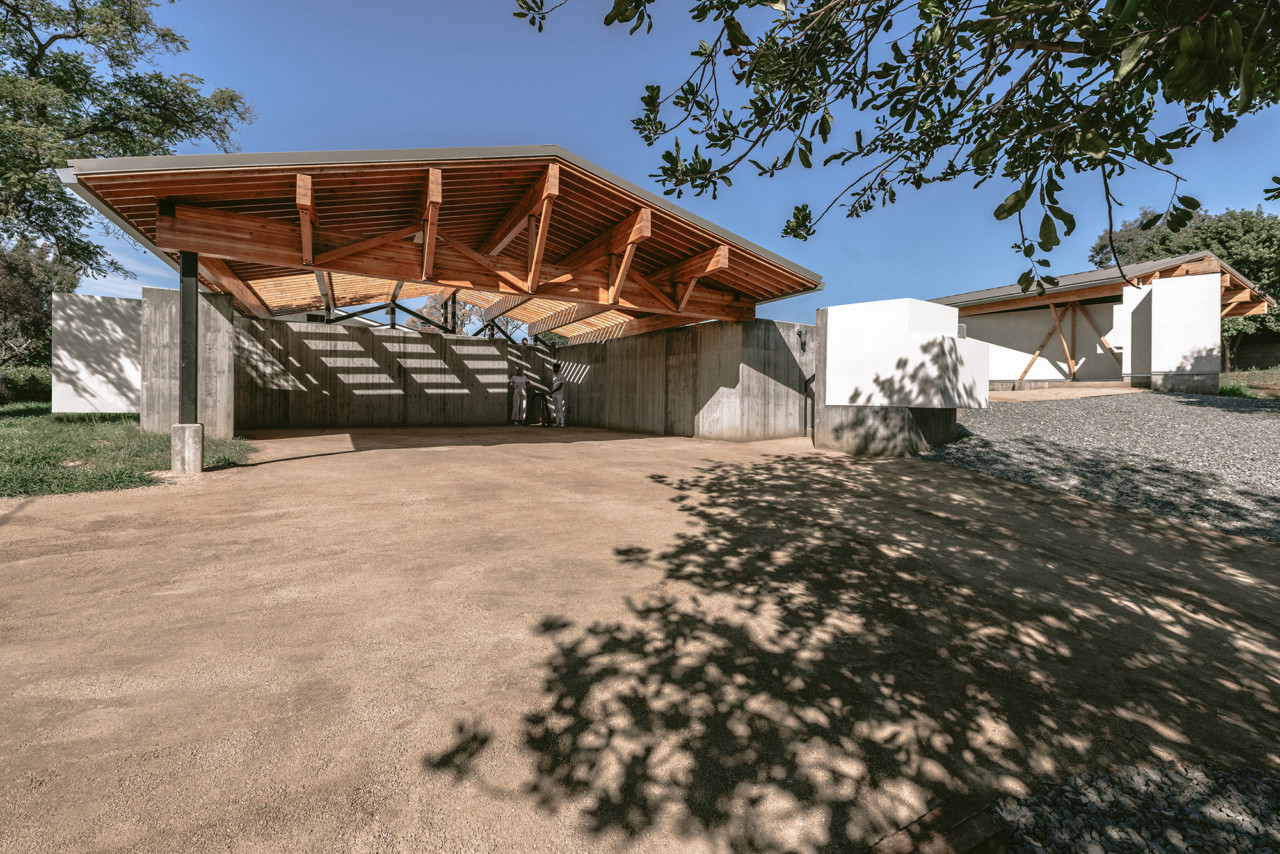The Los Angeles Design Group (LADG) has completed work on a four-structure residential compound and art space for a pair of visual artists, a painter, and a photographer, in a densely settled hillside pocket of the Highland Park neighborhood in northeast L.A.
The project, dubbed House in Los Angeles 1, entailed executing an addition to the clients’ existing mid-century ranch house, as well as adding a guest house with ample studio space and a pair of outbuildings for exhibitions and events hosted by the couple. Collectively, the structures allow guests to “move seamlessly between indoor and outdoor spaces,” per a news release detailing the project. Although the compound and its quartet of structures, all linked by a series of freestanding walls, comprise just a half-acre in the middle of a residential neighborhood, there’s a certain expansiveness to the project that suggests a more sprawling and remote settlement reimagined for a historic and compact suburban setting.
Located near Downtown Los Angeles, the culturally and socioeconomically diverse Highland Park, which was annexed in 1895, is often considered the first proper “suburb” of L.A.
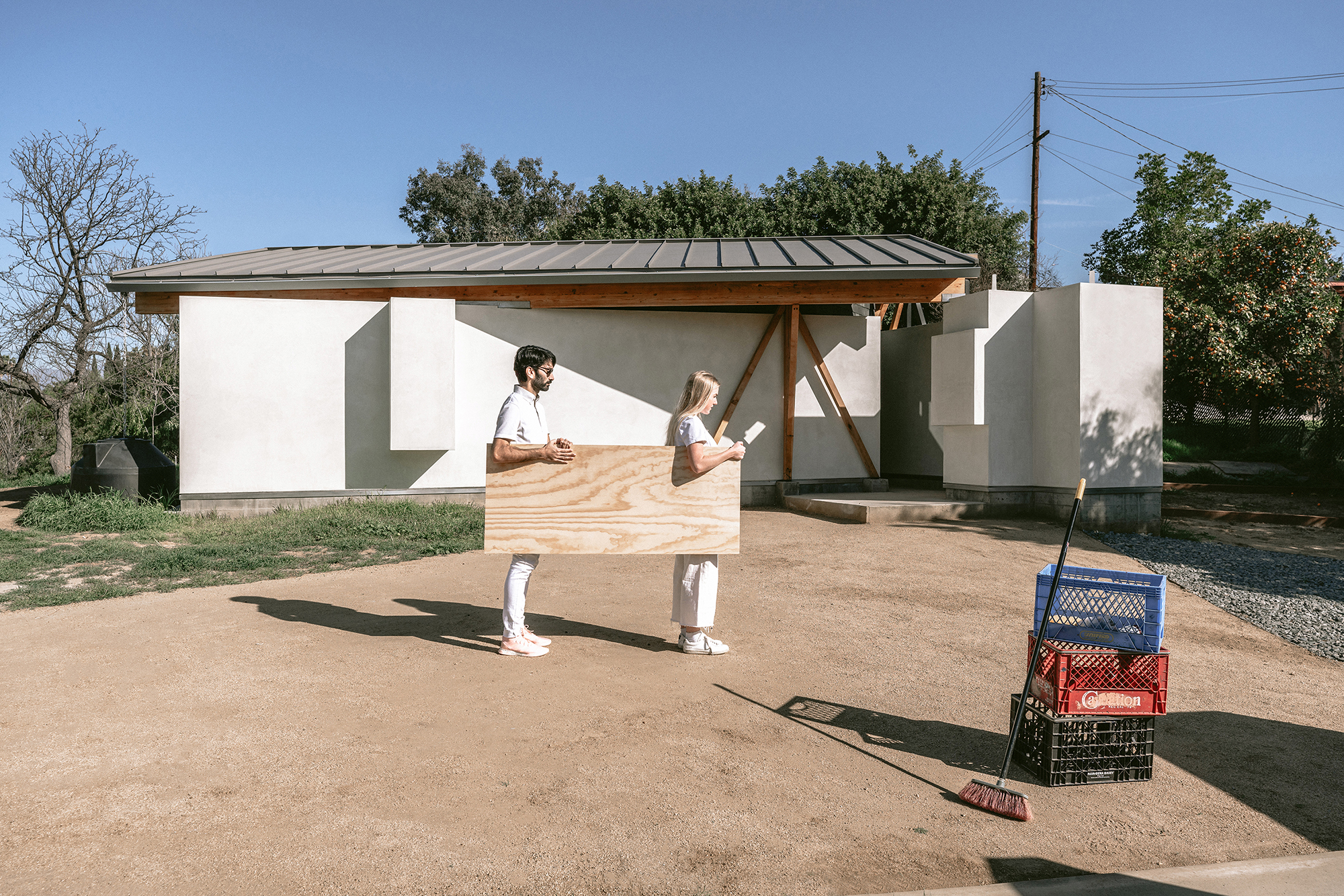
“Our project defies and reorganizes some of the architectural tropes associated with LA suburbia,” said Claus Benjamin Freyinger, co-founder and co-principal of The LADG, in a statement. “It’s not a single house with a unified program, meant to contain a sleeping family at night, who commute off to work and school lives in the morning. It’s a collection of buildings that integrates work, living, and communal activities around the livelihoods of two artists.”
The aforementioned walls, some of which intentionally evoke the iconic post-war Southern California tract housing of L.A. architect Cliff May, play an integral role in the design of the space, which results in a “matrix of covered structures and walls that extend well beyond them, delineating outdoor corridors and dynamic, versatile spaces for en-plein-air work and social interaction.” As the firm elaborated, some walls expanding “beyond the bounds of exterior space” contain multiple storage areas, a bathroom, and an outdoor shower. A series of “loosely” placed roofs spread across the compound provide shelter while organizing the property into nine distinct “bays” with some repetition of assigned activity: studio, courtyard, carport/event space, garden, guest house, courtyard, garden, porch, and main house.
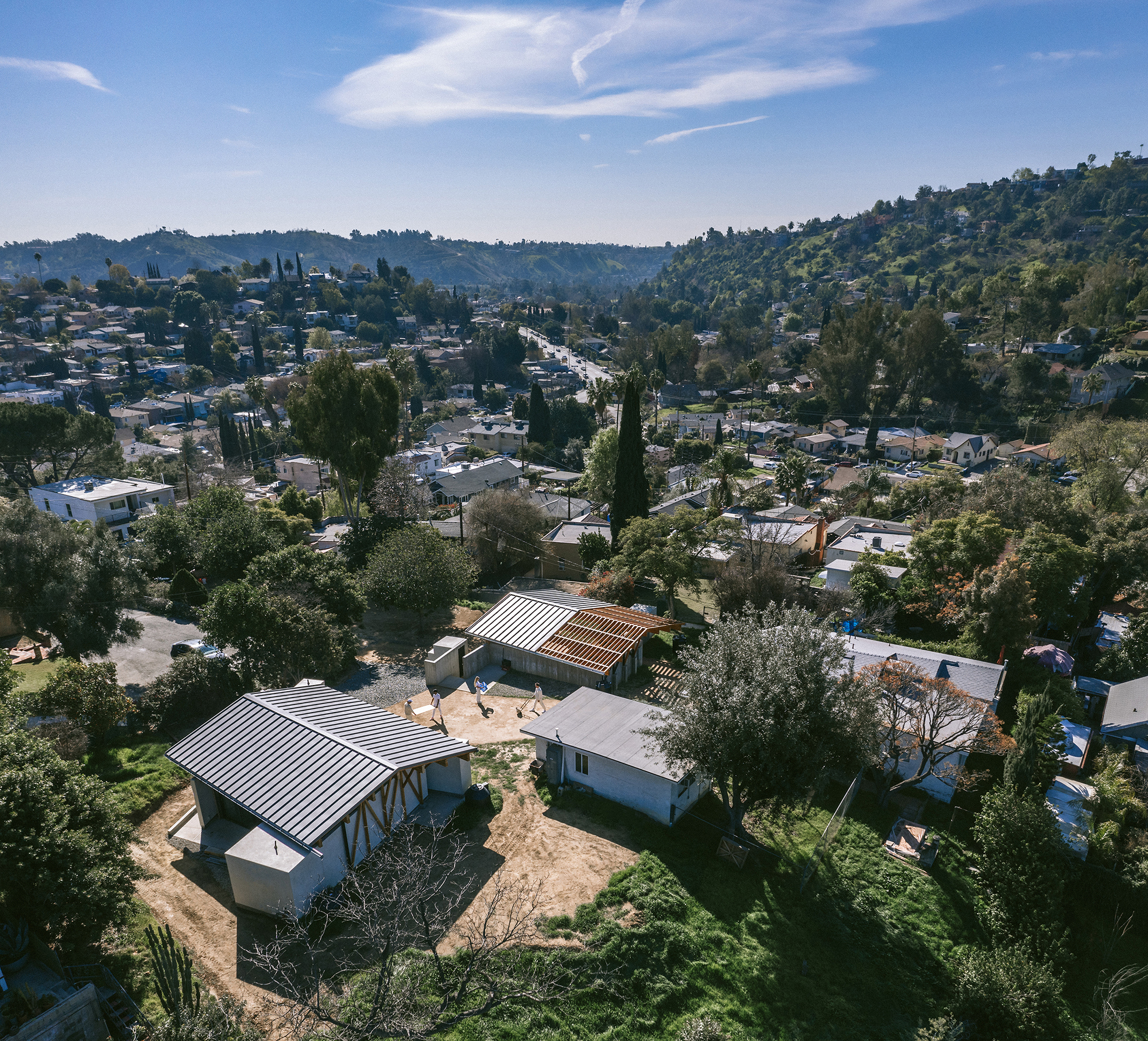
The spatial laxity present throughout House in Los Angeles 1 is a key feature as it transforms the entire site into “a series of rooms that stand alone between a smattering of walls, unbound by rooves and disconnected as if standing in a field.” The materials used in the project reflect this informal, non-rigid plan with the use of “apparently loose construction techniques and unassuming materials” including poured-in-place concrete, wood, trowled stucco, and metal roofs.
Interior spaces throughout the property were largely left in a pared-down and unfinished state for increased versatility and flexibility when the artist-clients host exhibitions and events or need to alter their respective studio spaces. “The finish of the studio tries to make surfaces available for the client to use and modify,” said Andrew Holder, who serves as co-founder and co-principal of The LADG alongside Freyinger, and is also an associate professor at the Harvard Graduate School of Design. The firm, founded in 2014, maintains offices in both Cambridge, Massachusetts, and Venice, California.
“While much of the conversation about contemporary architecture has shifted to Downtown Los Angeles, we think there is a role for the suburbs in setting the agenda for progressive design,” added Freyinger in a statement. “The single-family home has helped define what it means to be an Angelo.”









